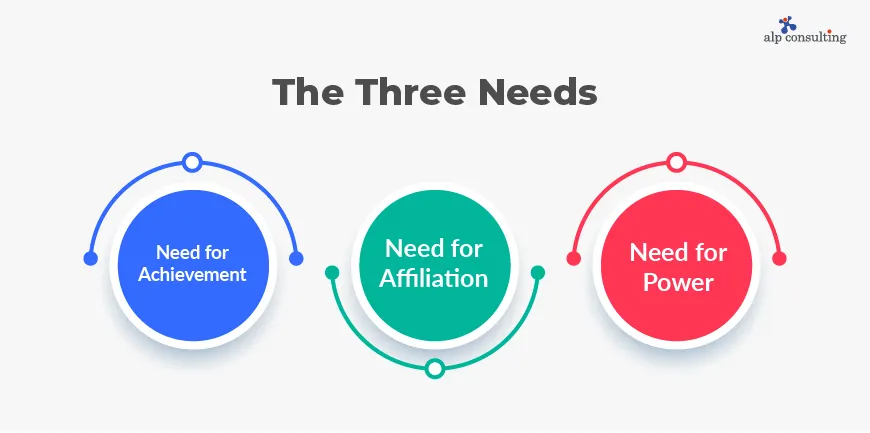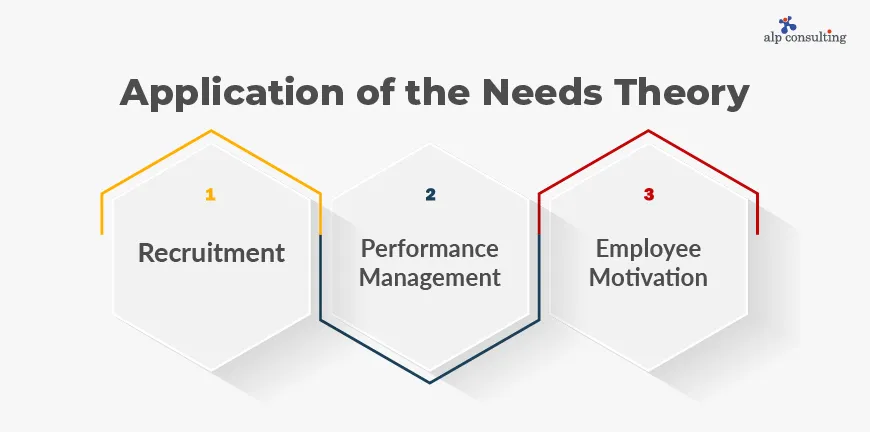
Importance of Cognitive Skills in the Workplace in 2023
03/07/2023
What are the Functions of Staffing? – Definition, Importance, Advantages
05/07/2023The Needs Theory was developed in the year 1960, by the American Psychologist David McClelland. The Needs theory is also known as- Three Needs Theory, acquired needs theory, or Learned needs theory. The theory aimed at explaining motivation by concentrating on three main aspects achievement, power, affiliation. The needs theory necessarily divides the needs of employees into three main categories- achievement, affiliation, and power.
So, how can one incorporate the needs theory to effectively recruit and manage employees?
Recruitment and retainment of talent is a challenge for any business, and more for those who operate in an open global market. There are several strategies you can use to get the recruitment process right. In this article, we will see how McClelland’s theory can be used to effectively recruit and engage employees.
Retainment of employees depends hugely on their motivation to work. Knowing how to effectively motivate your employees will make a mountain of difference to your company culture, morale, and employee productivity.
Before getting into how the needs theory can be incorporated by organizations to positively influence their recruitment and management capabilities, let us see what exactly the three needs are.
The Three Needs

1. Need for Achievement
This refers to a need to achieve something in your career field or interest area. This is a need that serves as a motivating and driving factor for people to work, and even helps them in enduring struggles and overcoming their weaknesses.
2. Need for Affiliation
This refers to an individual’s need to form relationships with others, on a social or interpersonal level. This means that they are the kind of people who prefer working in groups and find the need to please others and form alliances. They are individuals who stay away from risky, challenging tasks or situations and prefer collaborating instead of competing.
3. Need for Power
This refers to a need to control another person, influence their decisions and act as a leader. People who need power prefer to maintain their esteem and regard high and tend to overpower people and mostly expect others to agree with their ideas and opinions as they like being in the position to lead and want to hold authority over others.
Application of the Needs Theory

1. Recruitment
The two most important aspects in recruitment that the acquired needs theory can positively affect is-
- Job Design: Recruiters can design the job positions and descriptions, by aligning the tasks and responsibilities with the needs emphasized by McClelland’s theory.
Achievement is one of the needs of employees by word of the need’s theory.
For example, a candidate who has the need for achievement is often attracted to roles that seem challenging and one which is highly associated with personal growth. So, by putting up a job description that aligns the job responsibilities with a sense of achievement or is directed towards growth can attract the right candidates.
- Selection Process: By using assessment tools, such as interviews and psychometric tests, recruiters have a better shot at accurately evaluating candidates’ needs profile. Why is the assessment of the needs profile necessary? It helps identify individuals who possess the desired needs that align with the job and the organizational culture.
2. Employee Motivation
The needs theory aims at explaining the concept of motivation. Let us see how we can correlate the same to employee motivation resulting in higher retainment rate.
- Achievement: Every organization has a set of employees who are success-oriented, driven to achieve and accomplish certain goals that contribute to the success of the company, and they usually seek opportunities to excel. An effective way for managers to motivate them would be to set challenging but attainable goals, provide regular feedback on their performance, and recognize their achievements.
- Affiliation: You may notice that there are some employees who thrive where affiliation is given importance in the workplace. This need for affiliation makes an employee value positive relationships and teamwork. By fostering a supportive work environment, encouraging collaboration, and providing opportunities for social interaction and team-building activities, managers can ensure that the employees meet their affiliation needs.
- Power: Some employees are fuelled and are highly motivated to make an impact when they are given a sense of power, influence, and control. This can prove to be positive for the productivity of the organisation if managers satisfy their needs, delegate authority, provide opportunities for decision-making and leadership roles, and recognize their ability to influence outcomes.
3. Performance Management
Needs theory can play a key role in accelerating the performance management of employees as one of the main factors of achieving better performance is employee motivation.
The three main factors influencing the performance management are-
- Feedback and Recognition: Regular feedback and recognition play a crucial role in McClelland’s theory. Providing constructive feedback, acknowledging employees’ achievements, links their efforts to the organization’s goals. It helps in motivating employees to work better and perform well in the future, as they are now aware of and understand how their performance aligns with their needs.
- Career Development: Managers can use McClelland’s theory to guide employees’ career development plans. For example, employees who are looking to achieve may benefit from opportunities for skill development and advancement, while those with a high need for power may thrive in positions that offer leadership or decision-making responsibilities.
- Job Rotation and Enrichment: Mixing it up at the workplace can produce surprisingly positive results. What we mean is providing employees with a variety of tasks and responsibilities (job rotation) or expanding their roles to include more challenging and meaningful work (job enrichment) can contribute to enhancing their motivation levels as well as catering to their needs.
- Team Building: Managers can consider McClelland’s theory when forming teams by ensuring a balance of individuals with unique needs. This diversity can create a dynamic and complementary team where members’ needs can be met collectively.
Conclusion
Note that while McClelland’s Needs Theory provides valuable insights into employee motivation, you cannot solely depend on it to bring in the kind of changes you are expecting in the workplace environment.
To see visibly impactful changes, it must be used in conjunction with other theories and considerations for you to develop a comprehensive approach to recruitment and employee management. Individual differences and other factors should also be considered to create an inclusive and motivating work environment.
FAQ
What Theory Was Developed by David Mcclelland?
David McClelland, an American psychologist, is best known for his work on motivation and achievement. He developed the Theory of Needs, also known as the Three Needs Theory or McClelland’s Theory of Motivation.
Contact Us For Business Enquiry

Rajkumar Shanmugam
Rajkumar Shanmugam is the Head of HR at ALP Consulting, bringing over 19 years of comprehensive HR leadership experience across India and international markets. His expertise spans talent acquisition, employee relations, performance management, compliance, and HR transformation. Rajkumar has a proven track record of driving people-centric initiatives, enhancing workplace culture, and aligning HR strategy with business goals. With extensive experience in US staffing operations and global mobility, he continues to lead organizational excellence through innovation and employee engagement.




